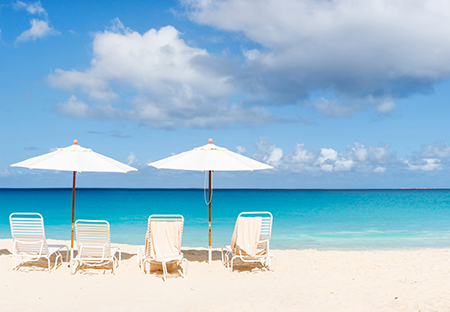
 Snorkel with sea lions, soak up the sun with the iguanas, or simply marvel at the natural beauty that surrounds you – just a typical day in the Galapagos Archipelago! Situated 600 miles off the coast of Equador, this isolated haven of biodiversity remains nature’s greatest science lab, home to dazzling array of birds, reptiles, fish and mammals that you won’t find anywhere else. With no known predators, the wildlife here exhibit almost no fear of humans. But really, f you got to lay about on the stark lava fields of Rabida or the white sand beaches of Espanola, you’d be pretty mellow, too.
Snorkel with sea lions, soak up the sun with the iguanas, or simply marvel at the natural beauty that surrounds you – just a typical day in the Galapagos Archipelago! Situated 600 miles off the coast of Equador, this isolated haven of biodiversity remains nature’s greatest science lab, home to dazzling array of birds, reptiles, fish and mammals that you won’t find anywhere else. With no known predators, the wildlife here exhibit almost no fear of humans. But really, f you got to lay about on the stark lava fields of Rabida or the white sand beaches of Espanola, you’d be pretty mellow, too.
They sit 972 km off the western coast of Ecuador, but the Galapagos Islands may as well be a foreign planet. Volcanic and teeming with wildlife you won’t find anywhere else on Earth, the archipelago remains one of the world’s most captivating and fragile destinations. There 18 islands and over 100 islets in the Galapagos Archipelago, but only a few are large enough to explore. Before you go, get to know them on a first-name basis:
Genovesa (aka Tower)
Highlights: Nesting colonies of Frigatebirds, Nazca boobies, red-footed boobies
One of the archipelago’s northernmost islands, Genovesa is a popular roosting spot for frigatebirds, storm petrels, masked boobies and other seabirds. The tiny island affords great snorkeling opportunities; you’ll spot many a sea lion and fur seal…and maybe even a hammerhead shark.
Espanola (aka Hood)
Highlights: Sea lion colonies, mockingbirds, nesting albatross, marine iguanas, blue-footed boobies and Galapagos hawks
Wildlife is the highlight of Espanola and the star of the show is the waved albatross. Don’t be surprised if you’re joined by some friendly sea lions while snorkeling off Gardner Bay and Punta Suarez.
Floreana (aka Charles or Santa Maria)
Highlights: Sending and delivering post cards via post barrel, flamingo lagoon, Darwin finch and Flour Beach
A favourite stop for green sea turtles, pirates, whalers and now tourists, Floreana’s sandy beaches are a sigh to behold. Honour the tradition of Post Office Bay by leaving some mail and taking some back home with you.
South Plaza
Highlights: Land iguanas, nesting swallow-tailed gulls and sea lions
A great spot for birdwatchers, walking South Plaza’s sea cliffs will bring you into close contact with frigatebirds, Audubon shearwaters, brown pelicans, swallow-tailed gulls and, of course, the region’s ubiquitous boobies.
Bartolome (aka Bartholomew)
Highlights: View of Pinnacle Rick and panoramic views, mating sea turtles, sting rays, sting rays, white-tip sharks and penguins
Small and desolate, Bartolome’s dramatic volcanic environment is simply stunning. A favourite of photographers and hikers, it’s the archipelago’s most visited and photographed island.
San Cristobal (aka Chatham)
Highlights: Interpretation of the history of the Galapagos. San Cristobal tortoise preserve, magnificent and great frigatebirds nesting, sea lions and snorkeling
One of the oldest islands in the chain, the eroded volcanic peaks of San Cristobal are tailor-made for hiking and mounting-biking. Snorkeling near Kicker Rock brings you closer than ever to sea turtles, manta rays and small (ie not dangerous) sharks.
North Seymour (aka Seymour Norte)
Highlights: Nesting frigatebirds, swallow-tailed gulls, blue-footed boobies, iguanas
A great spot for birdwatching, North Seymour is home to the frigatebird, blue footed boobies and red-billed tropicbirds. Sea lions can often be spotting playing close to shore, too.
Santiago (aka San Salvador)
Highlights: The geological forces that create the Galapagos, fur seal grotto, pink flamingo lagoon, Galapagos hawks and vermilion flycatcher
Popular with visitors, Santiago offers some of the Galapagos’ best wildlife viewing opportunities. Be sure to have your camera ready while exploring the pink flamingo lagoon and the fur seal grotto.
Santa Fe (aka Barrington)
Highlights: Land iguanas, Galapagos hawks and playful sea lions
Surprisingly flat in relation to its neighbours, Santa Fe is one of the few islands in the archipelago to be formed by tectonic uplift rather than volcanic activity. Land iguanas, marine turtles and sea lions abound on its shores.
Santa Cruz (aka Indefatigable)
Highlights: Soft white sand beach and nearby lagoon, tortoise breeding centre, visitor centre, land iguanas, tortoises in the wild, land birds, woodpecker finch and vermillion flycatcher, excellent snorkeling at high tide
Home base of the Galapagos National Park, The Charles Darwin Research Station and giant Tortoises, Santa Cruz is one of the archipelago’s largest and busiest islands.
Fernandina (aka Marborough)
Highlights: Colonies of marine iguanas, penguins and flightless comorants
The youngest of the islands, Fernandina doesn’t look a day over 700,000 years old. Rich with marina iguanas, Galapagos penguins and flightless cormorants, this active volcanic island is always in a state of flux.
Isabela (aka Albemarle)
The region’s largest island and part of the western island group. Isabela is on e of the archipelago’s lesser -visited destinations despite its wealth of natural wonders. Isabela also boasts a great selection of small seafood restaurants in its only main town – Puerto Villamil. Highlights include:
- The Sierra Negra Volcano – the region’s largest basaltic caldera
- Wide mangrove-lined bay, home to penguins
- Flightless cormorants and sea turtles
- Coastal lagoons and black lava flows, home to several species of birds
- Sea lions and manta rays
- Las Tintoreras, home to a colony of white-tip sharks
- Fernandina Island, boasting some of the most diverse marine, wildlife and vegetation in the Galapagos
- Massive colonies of marine iguanas
Click here for our current Galapagos Islands Packages







